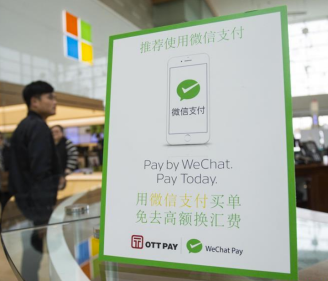 The number of Chinese tourists traveling the globe has increased significantly for the last ten years, making them the largest group of travelers in the world. Now, thanks in part to a recent agreement between the U.S. and China to extend visas for short-term business travelers, tourists and students, the U.S. could see an increase in Chinese travelers in the near future.
The number of Chinese tourists traveling the globe has increased significantly for the last ten years, making them the largest group of travelers in the world. Now, thanks in part to a recent agreement between the U.S. and China to extend visas for short-term business travelers, tourists and students, the U.S. could see an increase in Chinese travelers in the near future.
This trend is supported by research from the latest Chinese International Travel Monitor (CITM) from Hotels.com which reveals the U.S. is the second most popular destination for Chinese travelers to visit in the next 12 months (behind France), with popular U.S. landmarks like the Grand Canyon and the Statue of Liberty topping travel wish lists.
The CITM research also identifies that, while cities in Asia Pacific remain the most popular (82 percent of Chinese travelers have visited in the past 12 months), visitors to Europe and America have increased with a year over year growth of 25 percent and 11 percent, respectively. These destinations were particularly popular with millennial travelers, with 42 percent visiting Europe and 29 percent visiting America in the past 12 months.
“The CITM reveals that the United States is one of the top five countries Chinese travelers visit the most,” said Josh Belkin, vice president and GM of the Hotels.com brand. “With tens of thousands of places to stay across the U.S., like distinctive boutiques, spacious vacation rentals and familiar chains, our site and mobile app have the perfect places for Chinese travelers of all ages and lifestyles.”
In 2016, there were 122 million outbound Chinese tourists – four percent more than in 2015 and a massive 74 percent more than in 2011, when the first CITM was published. China is already the largest source of international travelers for many countries – despite the fact only 10 percent of the population had passports in 2016.
“Chinese travelers in the United States tend to be more affluent than those who choose other destinations”, said Pierre Gervois, CEO of China Elite Focus Magazines LLC and Founder of the STC magazine, a luxury travel digital publication in Chinese Mandarin. “Real Estate investment in the United States is now the #1 real reason – and rarely stated in surveys – for affluent and wealthy Chinese outbound travelers, as they have acquired for $100 billion in U.S. Real Estate in 2016”
Source: CITM, hotels.com, STC magazine
 They speak English now (Just in case you didn’t notice).
They speak English now (Just in case you didn’t notice). Citcon, the integrated payment and marketing platform, announced a strategic partnership to enable brands in North America to accept
Citcon, the integrated payment and marketing platform, announced a strategic partnership to enable brands in North America to accept 
 .”
.”